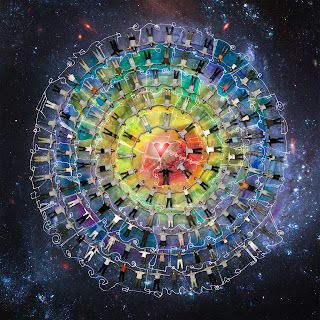Back in Harmony and Rhythm
Armodoxy for Today: Rhythms
This week of Advent begins with a scriptural reading from Hebrews chapter 1. It reads like an essay, explaining that God speaks to us through His Son, Jesus Christ. The scripture reads, “Long ago God spoke to our ancestors in many and various ways by the prophets, but in these last days he has spoken to us by a Son, whom he appointed heir of all things, through whom he also created the worlds. He is the reflection of God’s glory and the exact imprint of God’s very being, and he sustains all things by his powerful word. When he had made purification for sins, he sat down at the right hand of the Majesty on high, having become as much superior to angels as the name he has inherited is more excellent than theirs.”
This introduction to the book we have landed on today, namely Hebrews, has a cosmic flavor to it. Interestingly enough we read it in the Church during the week of the Winter Solstice.
The author of Hebrews continues his writing setting apart the Son of God from the angels, “For to which of the angels did God ever say, ‘You are my Son; today I have begotten you’? Or again, ‘I will be his Father, and he will be my Son’? And again, when he brings the firstborn into the world, he says, ‘Let all God’s angels worship him.’” For the author of this scriptural treasure, it is important to set Jesus apart from all of creation.
When we talk about the Apostolic Church, we are speaking of the Church at the time of the Apostles. There was no Bible at the time. There was only the community of believers that assembled together to be filled with the Holy Spirit and to be encouraged by one another. The Apostolic Church, and later the early Church, understood the Church and the Christian expression as part of a rhythm of the universe that began at Creation and then experienced the Fall because of our actions against the rhythm and harmony of the universe.
Christ is set apart. Christ comes to put us back into harmony and in rhythm with the universe, that is all of creation.
We are traveling through the period of Advent in preparation of welcoming the Nativity and Revelation of God in our lives. Today, we stop and hear the message of harmony and rhythm. We are a day off of the Winter Solstice. We look within at our lives and we look without at the patterns of nature. Christmas is near.
Let us pray a prayer that comes to us from Holy Scripture for the Book of Sirac, (43) The beauty of the celestial height and the pure firmament, heaven itself manifests its glory. The sun at its rising shines at its fullest, a wonderful instrument, the work of the Most High! Let us praise Him the more, since we cannot fathom him, for greater is He than all his works; Awesome indeed is the LORD, and wonderful His power. Lift up your voices to glorify the LORD as much as you can, for there is still more. For who has seen him and can describe him? Who can praise him as he is? Beyond these, many things lie hidden; only a few of his works have I seen. It is the LORD who has made all things; to those who fear him he gives wisdom.



